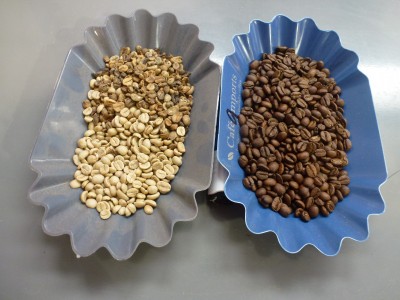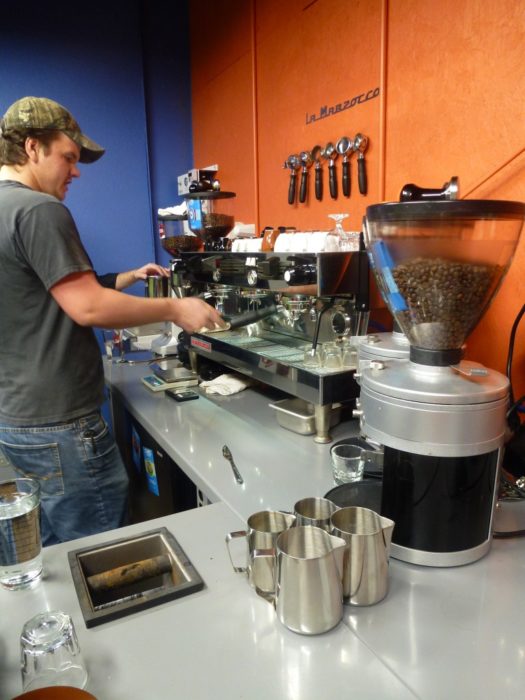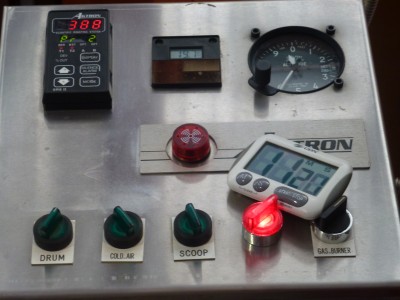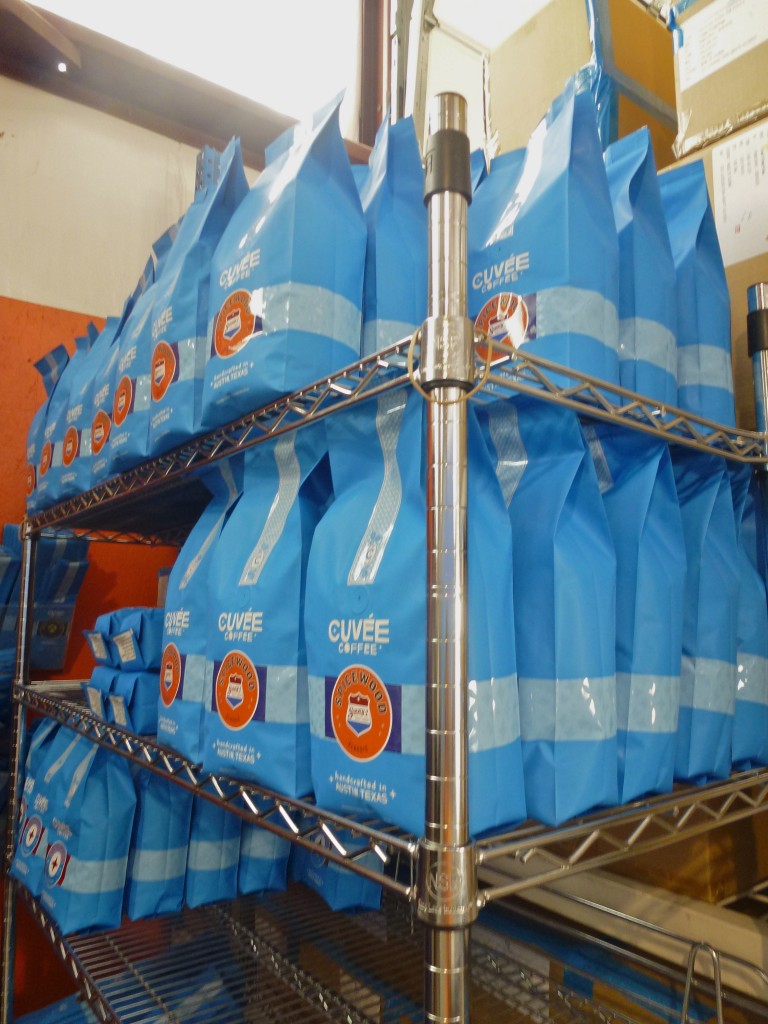To encounter Clancy Rose, Cuvee’s coffee roaster, aside one of his burnished Samiac machine is like meeting the owner of a Ferrari or Maserati. Words like “first crack” and “carmelization” tumble into the room, creating a continuous riff of geeky adjectives familiar to aficionados of high tech and high design. Clancy is one of five employees at a small Austin roaster, one that telegraphs technology in so many ways, not to mention in Clancy’s language and style. He relies on the shiny stainless steel digital controllers athwart each roaster that tweak and time the machines, enabling Cuvee to roast the best beans consistently, predictably, and according to specifications developed since its founding in 1998.
Cuvee’s name comes from the term reserved for wine, a description for the highest quality grapes used the production of sparkling wine or champagne. The founders like to think of their business as similar to the wine business, seeking beans like reserves of grapes, roasting instead of fermenting, speaking in terms familiar to wine sommeliers when describing their beans to customers. The company spends a lot of time with its farmers in order to develop beans and roasts in much the same way as wine makers work with soils, climates, and grape varieties. Beans are an obsession to these coffee geeks.

Founders Rashelle and Mike McKim were early pioneers of the direct trade movement, a role that led them to work directly with farming communities in the countries where they purchase coffee beans. And the company’s affinity for technology began long before the founding of Cuvee. Mike’s uncle, Carl Staub is a food scientist who invented a technology for measuring the degree of roast. A machine called a spectrophotometer from Carl’s company, Agtron, supplies Clancy’s competitive edge, allowing him to nudge the beans towards a roast that he and his team believe draw out the best qualities of each bean from each harvest.

Mike started Cuvee after a job installing fiber optic cables, transforming his personal network away from digital geeks to roasting geeks. He and a friend started to experiment with coffee beans when they purchased a Samiac machine designed for professional roasters. They turned out large batches roasted beans, enough for them to supply their growing circle of fans. They moved from hobby roasters to professional roasters, following the growth of coffee culture from Seattle to Portland, from Starbucks to Stumptown, as they used the Agtron technology to roast predictably and often.

The company headquarters is in Spicewood and operates in a low-profile, unmarked building common in the world of low profile high technology companies. The tasting room has the feel of a Maseratishow room, but instead holds equipment from La Marzocco an Italian espresso machine manufacturer. Polished steel and glass brighten the room full of small cups, dark beans and tiny spoons perched aside single shot glasses.
Cuvee’s roasters inhabit a large warehouse, with the owner’s speedboat at one end and pallets of beans at the other. In the middle are whirring machines that consume bucket loads of green beans into their heated cavities, each with a small glass window that reveals the beans as they turn slowly from light green to varying shades of brown. Cuvee’s trademark blue bags pile up on shelves, each marked with labels intensely designed with the logo of a customer or images that connote a particular coffee region, location or personality of their own Cuvee culture. One bag, marked Spicewood, contains beans that are Cuvee’s houseblend, named after the company’s hometown. Another Fazenda Pantano is for the Brazilian family Ferrero that produces a chocolaty, nutty, smooth bean using a method called “honey processing,” which Cuvee says gives the beans a “clean” taste. Does this remind you of wine tasting terminology?
Cuvee sells mostly to independent coffee shops such as Caffé Medici and Once Over Coffee, but its blue bags also appear in grocery shops such as Whole Foods Markets and restaurants such as La Condesa and Barley Swine. You can bet that the Agtron will be put to the test as Mike reaches his revenue goal of $12 million in five years. Those robin’s egg blue bags may become an Austin symbol far outside the city limits.

Author